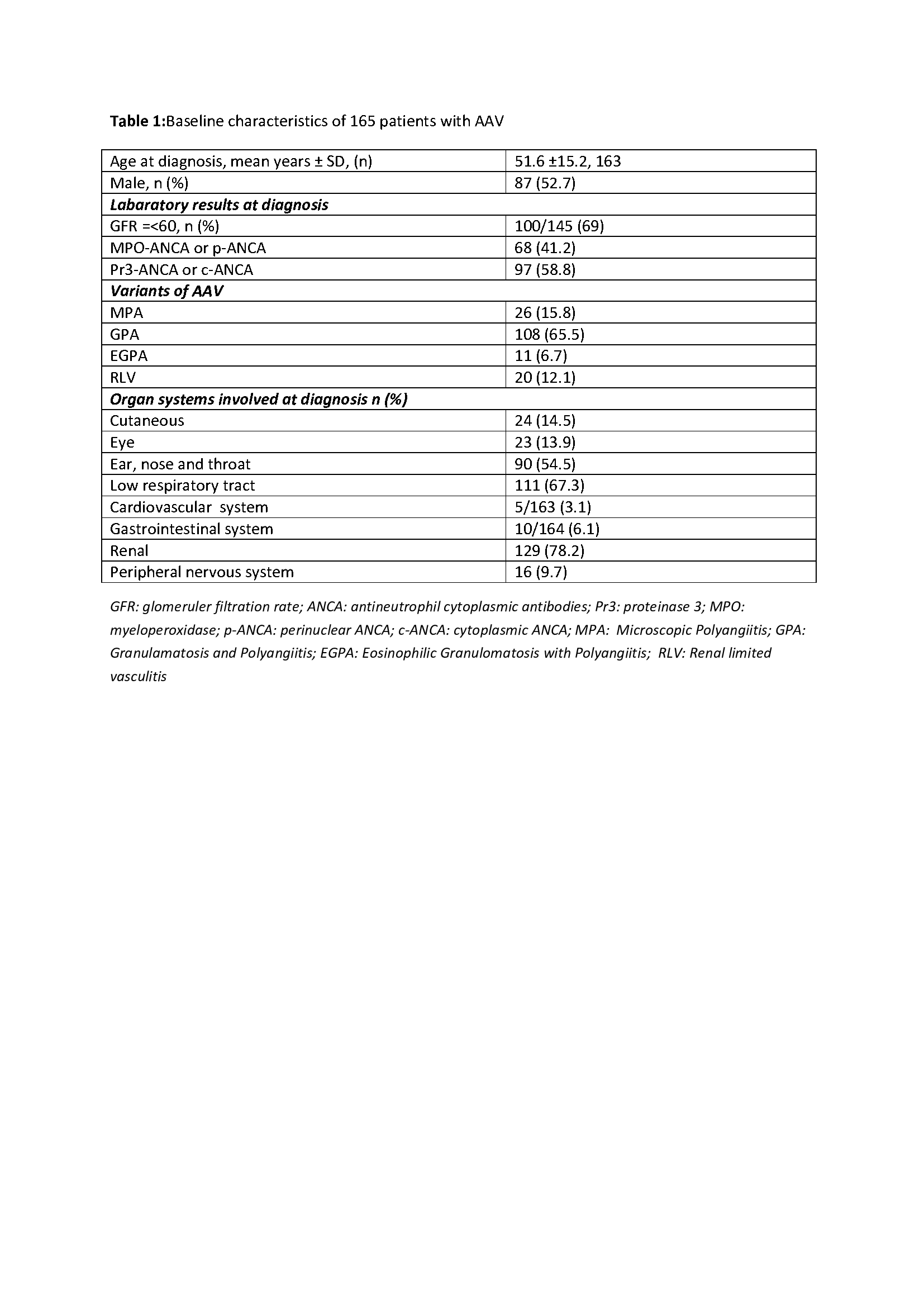Session Information
Session Type: Poster Session C
Session Time: 9:00AM-11:00AM
Background/Purpose: One of the controversial matters in ANCA associated vasculitis is the definition of disease based on clinical characteristics since there is a remarkable overlap between disease groups. For instance, single organ disease like renal limited vasculitis (RLV) is not take place most of the definitions or classification criteria.
The aim of this study to determine clinical subgroups that may incorporate different clinical phenotypes, including RLV in AAV patients, followed up in two tertiary centres.
Methods: Baseline clinical features of AAV patients were studied. To analyse our data and identify sub-groups of AAV patients with similar clinical characteristics, a two-step cluster analysis using log-likelihood distance measures was performed. For clustering, we evaluated the following variables: gender, age at symptom onset, the presence of major organ involvement (renal, upper and lower respiratory tract, skin, joint, eye) and ANCA specificity
Results: In total 165 (87 [53%] male, age at diagnosis 51.6± 15.2 years) out of 238 (126 [53%] male, age at diagnosis 51.3± 15.6 years) AAV patients included in the analysis. Some of the demographic and clinical characteristics were summarized in table 1. There are two distinct clusters in AAV patients. Of 78% of those AAV patients with MPO/pANCA, 56% with renal involvement and 89% without ENT involvement were in Cluster 1. Of 77% those patients with PR3/cANCA, 89% with arthritis, 74% with eye involvement, 83% with skin, 91% with upper, and 60% with lower respiratory tract involvement and 92% of those without renal disease were in Cluster 2. Most of them (89%) classified as MPA and all as RLV were repositioned in Cluster 1, and 74% of GPA and 64% of EGPA patients were in Cluster 2.
Conclusion: Patients with AAV could be separated into two distinct categories. PR3 ANCA specificity and more organ/system involvement determine one and MPO ANCA specificity in renal disease define other subgroups.
To cite this abstract in AMA style:
Ediboglu E, Gercik O, Bilgin E, Solmaz D, Ocal I, Saglam A, Soypacacı Z, Cinaklı H, Kiraz S, Karadağ �, Akar S. Clinical Disease Might Be Divided into Two Phenotypes in ANCA Associated Vasculitis; Results of a Cluster Analysis [abstract]. Arthritis Rheumatol. 2020; 72 (suppl 10). https://acrabstracts.org/abstract/clinical-disease-might-be-divided-into-two-phenotypes-in-anca-associated-vasculitis-results-of-a-cluster-analysis/. Accessed .« Back to ACR Convergence 2020
ACR Meeting Abstracts - https://acrabstracts.org/abstract/clinical-disease-might-be-divided-into-two-phenotypes-in-anca-associated-vasculitis-results-of-a-cluster-analysis/


